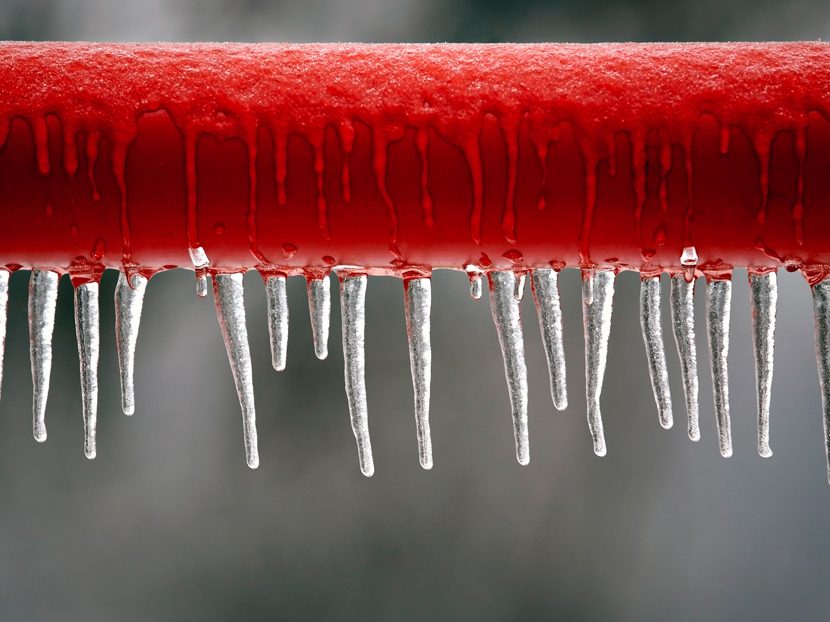Advice on Unfreezing a Frozen AC Pipe - Reinstating Normal Functionality
Advice on Unfreezing a Frozen AC Pipe - Reinstating Normal Functionality
Blog Article
We have stumbled upon this article relating to What Causes AC Pipes To Freeze? below on the web and thought it made good sense to write about it with you on this page.

Introduction
Finding that your air conditioning pipeline is iced up can be concerning, specifically throughout warm summertime when you count on your ac unit the most. Comprehending what to do in such a scenario is important to avoid more damages to your cooling system and guarantee your convenience inside.
Recognizing the Causes
A number of variables can add to the freezing of an air conditioning pipeline. Recognizing these causes can help you resolve the problem successfully.
Absence of Airflow
One common root cause of a frozen air conditioner pipe is inadequate air movement. When the airflow over the evaporator coil is restricted, it can cause the coil to go down below freezing temperature level, leading to ice formation on the pipe.
Reduced Refrigerant Levels
Insufficient refrigerant degrees in your AC system can additionally result in an icy pipe. Reduced refrigerant degrees can cause the stress in the system to go down, bring about the freezing of dampness on the evaporator coil.
Cold Weather Conditions
In colder climates, freezing temperature levels outside can add to the cold of AC pipelines. If your AC unit is not effectively insulated or if there are leaks in the ductwork, cool air can infiltrate the system, triggering the pipe to ice up.
Dirty Air Filters
Filthy or blocked air filters can restrict air flow in your air conditioner system, leading to various issues, consisting of a frozen pipe. It's essential to change or clean your air filterings system on a regular basis to make sure proper air flow and prevent ice buildup.
Indicators of a Frozen Air Conditioner Pipe
Recognizing the indicators of a frozen air conditioning pipeline is critical for prompt action.
Decreased Airflow
If you notice a substantial decrease in airflow from your vents, it could show an icy pipe.
Ice Buildup on the Pipe
Visible ice buildup on the refrigerant line or the evaporator coil is a clear indicator of a frozen AC pipeline.
Odd Sounds from the Unit
Unusual noises, such as hissing or bubbling, coming from your air conditioning device can signify that there's ice present on the pipeline.
Immediate Actions to Take
When faced with an icy AC pipe, it's essential to act rapidly to prevent further damage to your cooling system.
Switching off the a/c
The primary step is to switch off your a/c unit to avoid the system from running and aggravating the problem.
Looking for Blockages
Examine the area around the indoor unit for any blockages that might be blocking air movement, such as furniture or curtains.
Thawing the Pipe
You can use gentle techniques like positioning towels taken in warm water around the frozen pipeline to help thaw it slowly.
Safety nets
Taking safety nets can aid prevent future events of a frozen AC pipeline.
When DIY Methods Fail
If your attempts to thaw the pipe or address other concerns are not successful, it's time to call in an expert.
Value of Hiring a Professional HVAC Technician
A licensed HVAC service technician has the experience and tools essential to identify and fix concerns with your a/c system safely and effectively.
Normal Maintenance Checks
Set up routine upkeep checks with a specialist HVAC professional to make sure that your air conditioner system is running efficiently.
Changing Air Filters
Frequently replace or clean your air filters to stop air flow restrictions and keep optimal performance.
Shielding Exposed Pipes
If your AC pipes are exposed to chilly temperature levels, take into consideration insulating them to stop freezing during winter season.
Seeking Professional Help
If DIY approaches fail to settle the problem or if you're uncertain concerning just how to continue, it's finest to look for support from a certified HVAC service technician.
Verdict
Taking care of a frozen a/c pipeline can be a frustrating experience, yet knowing exactly how to react can help reduce damages and bring back convenience to your home. By understanding the reasons, identifying the indicators, and taking timely action, you can efficiently attend to the issue and avoid future occurrences.
Frozen AC Line: Why It Happens & What To Do About It
A frozen AC line can be a rather peculiar sight in a place like Phoenix, Arizona where nothing ever freezes. In this post, we’ll discuss what makes an air conditioner line frozen – and what you can do about it.
Dirty Air Filters
Did you know that you should be cleaning or replacing your air filters on a monthly basis? Failing to do this can result in airflow issues that, in turn, cause your evaporator coils and lines to freeze over. You’ll notice a buildup of ice on both components, although the buildup on your pipes will, of course, be more evident unless you open your air condition up to reveal the coils.
What To Do About It
Give your air filter a good cleaning if it’s reusable. If not, replace the filter outright. Next, switch your air conditioner’s fan setting on and leave it there for 2-3 hours. This will draw warm air in, helping to thaw your evaporator coil. You can also check out this article for some tips on cleaning the coils themselves if you’d like to speed the process up. Before you switch the unit back to its normal state, make sure the supply vents are completely unobstructed and free of dust or other debris.
If you keep having this issue even after replacing your filters regularly, contact a local HVAC repair company and have them inspect your evaporator coil, ductwork, and any other components that may be at fault. If you live in the Phoenix, Arizona area, give American Home Water and Air a call.
Low Refrigerant Levels/Leakage
What To Do About It
Contrary to what air conditioner “recharge” companies often tell their clients about refrigerant, it should never need to be simply refilled. You see, refrigerant runs in what experts refer to as a “closed loop.” Refrigerant really shouldn’t be leaving that loop. If it is, you’ve got a leak.
Paying someone to come and pump more refrigerant into your system (aka “recharge” it) isn’t the solution. Doing that will simply kick the can down the road. Besides, refrigerant leaks can be harmful to the environment and people in your home.
Rather, you need to take care of the leak with the help of a technician. Check out this article for some more information about dealing with air conditioners that are leaking refrigerant. Before you contact a technician, switch your thermostat to the off position. Then, switch the fan setting on and let it run for 2-3 hours so the unit can thaw.
Improper Temperature Setting
Improper temperature settings can also cause a drop in your air conditioner’s pressure. What many people don’t realize is that air conditioners are actually designed to run when temperatures have fallen above roughly 60 degrees Fahrenheit. If you run the unit when it’s cold outside, you’ll run into many issues, including frozen components.

Do you appreciate reading about How can I fix an air conditioner’s frozen pipe?? Post feedback below. We would be pleased to see your suggestions about this blog posting. In hopes to see you back again before long. If you enjoyed our blog entry if you please do not forget to share it. Thanks for your time. Visit us again soon.
Click Here Report this page